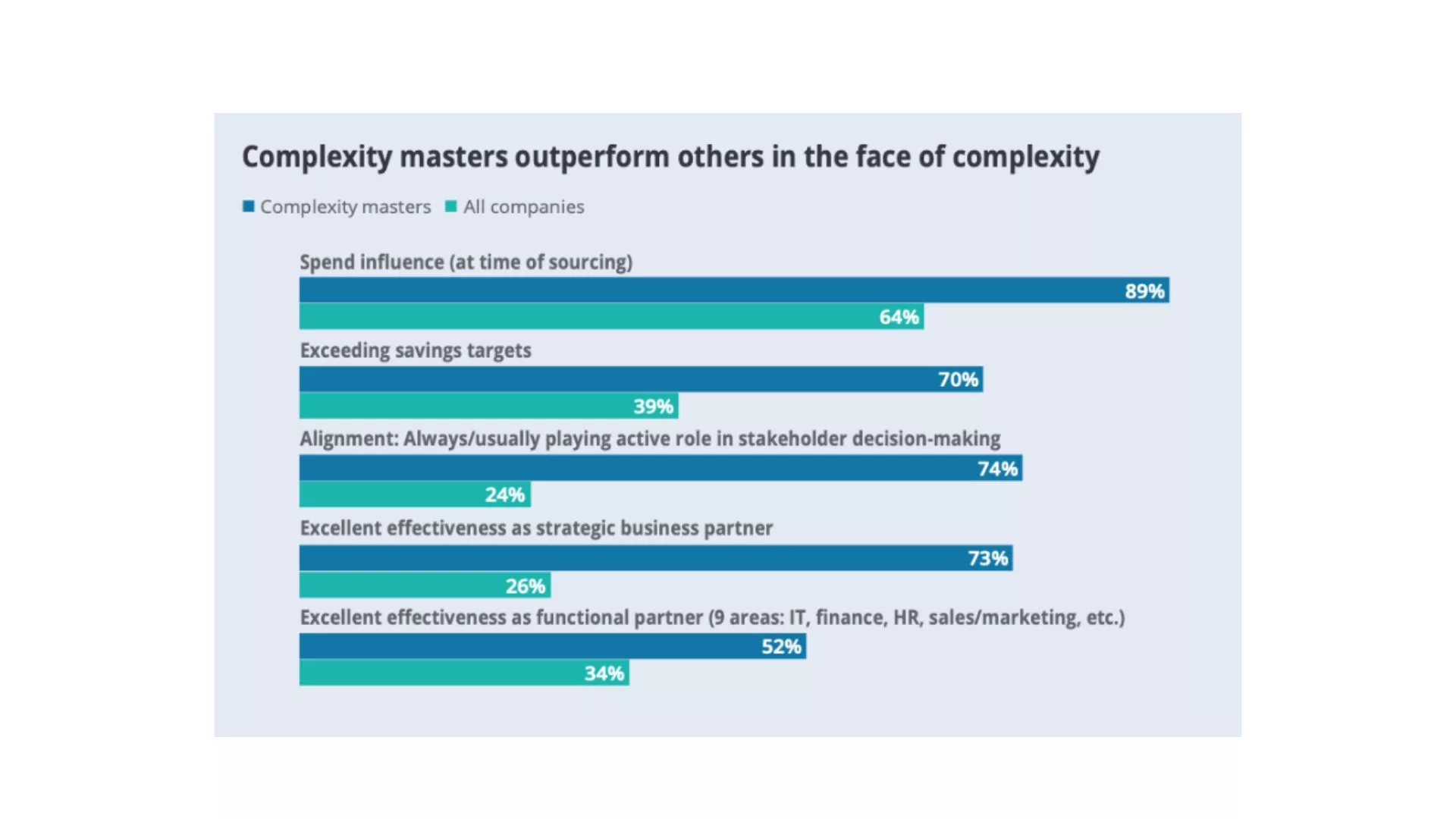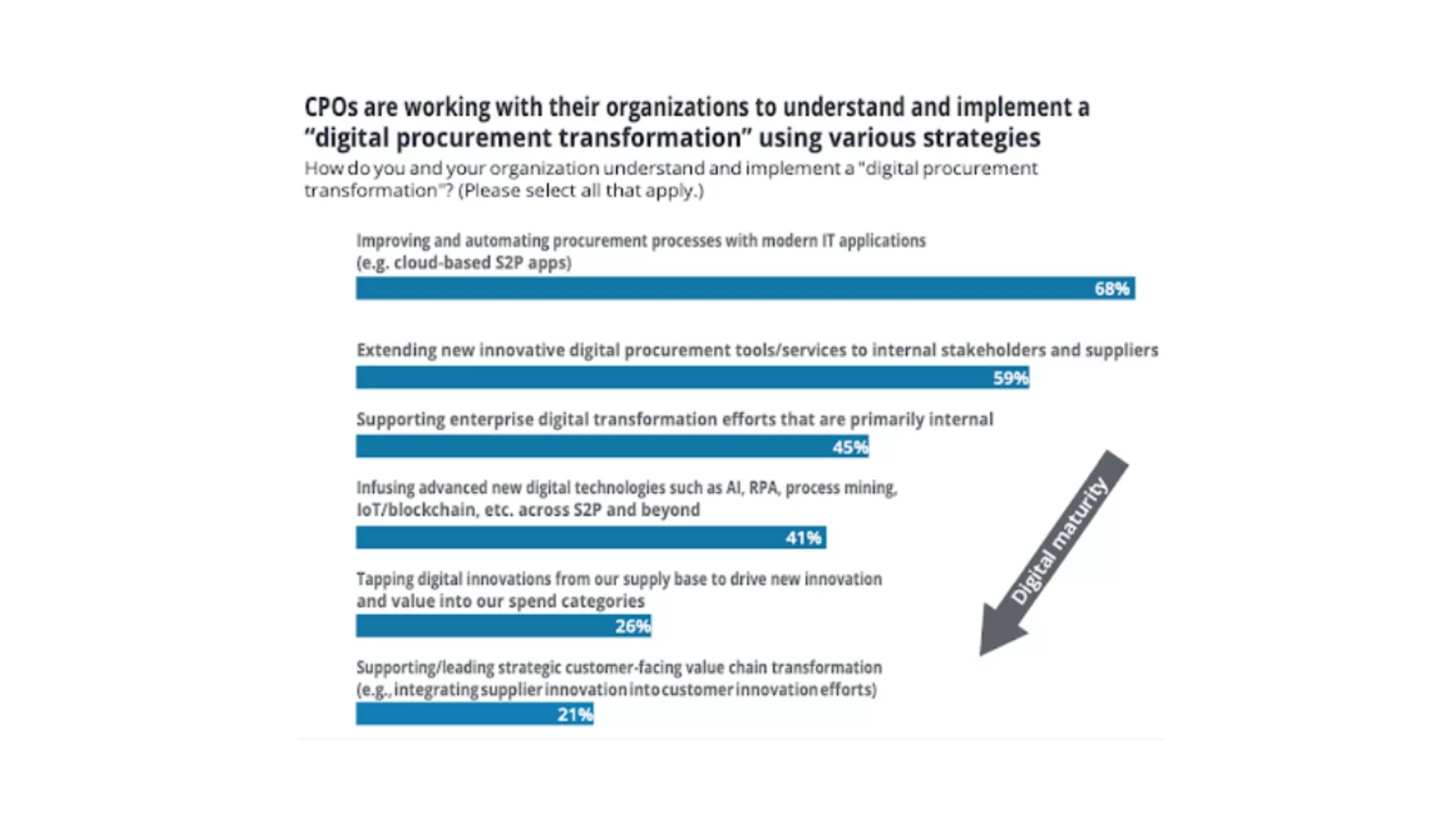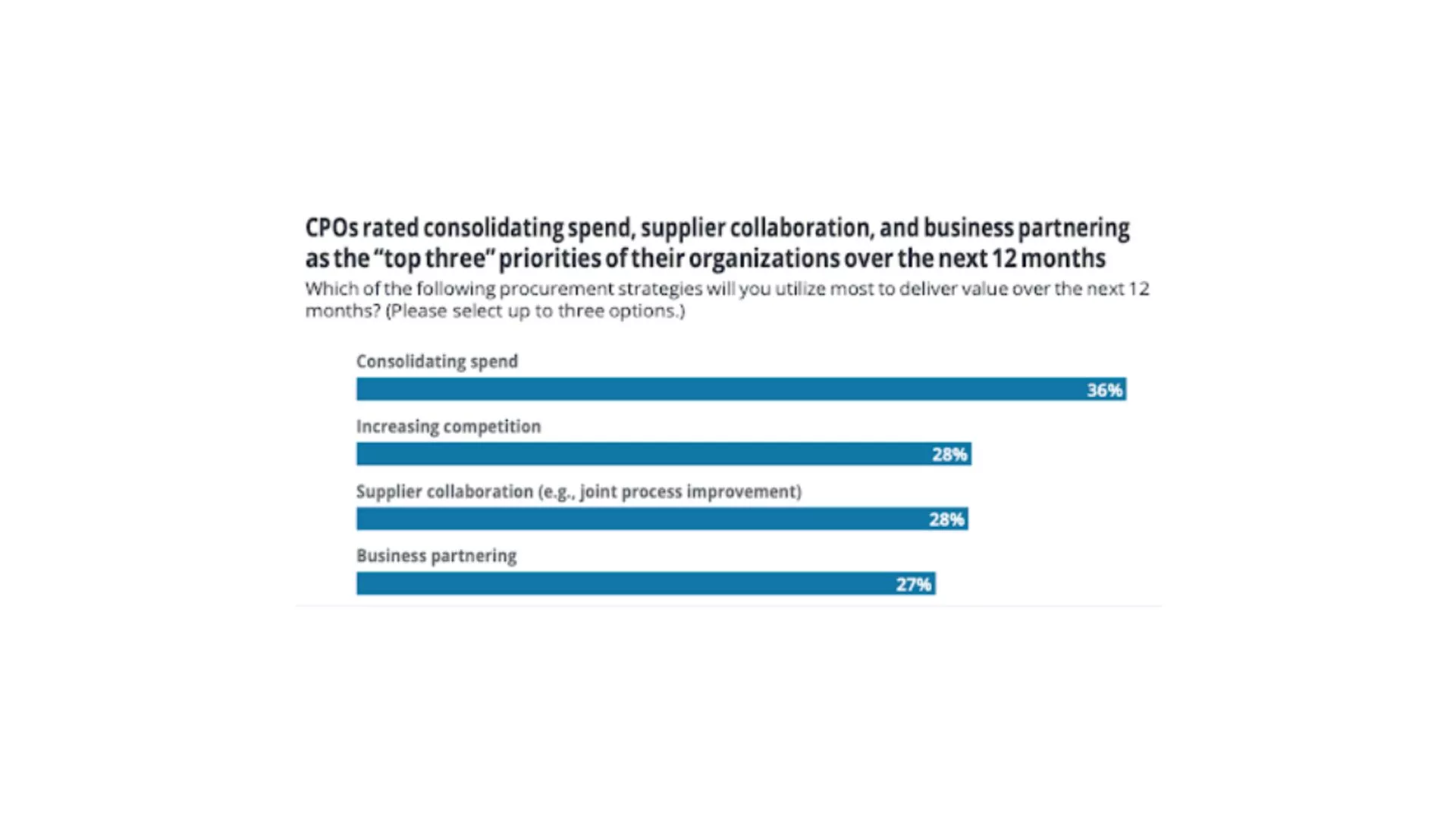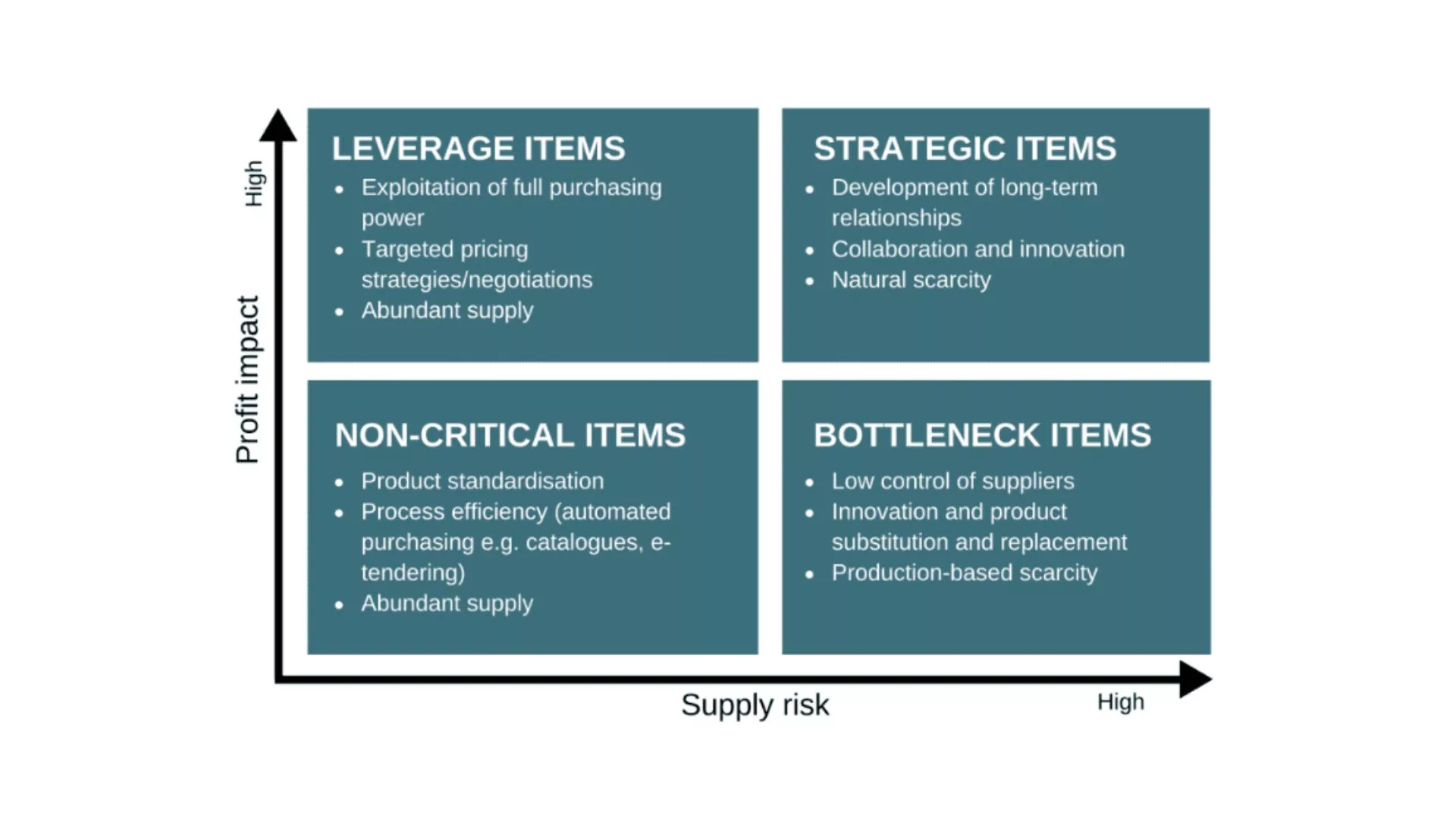At its heart, a successful procurement strategy is one that ensures cost-effective purchasing decisions are made from a group of reliable vendors who deliver quality goods on time and at mutually agreeable terms.
However, according to Deloitte’s most recent Global Chief Procurement Officer Survey, if there was one word that describes the scenario facing CPOs today, it would be complexity.
“Procurement organisations today shoulder an expansive and intricate set of responsibilities, and each new task that arises from these responsibilities adds another node to an ever-growing network of complex initiatives and challenges to address,” says Deloitte.
Some of these challenges are familiar – such as the perennial mandate to reduce costs. Others, however, revolve around newer risks and concerns – such as the high levels of uncertainty prevalent in the current business environment, competitive pressures to digitise and managing digital fragmentation with the supply base as well as within the organisation itself.
These complexities can’t simply be ignored. In fact, as Deloitte’s research suggests, procurement organisations that directly and proactively address complexity outperform their peers. Deloitte calls these high-performing firms “complexity masters” – i.e. those that are subject to a lot of complexity yet remain in the top quartile of procurement performance.

Lack of Transparency Increases Risk and Complexity
The metrics shown in the chart above highlight performance differences between the 40 ‘complexity masters’ and the remaining 481 firms that participated in the survey.
Deloitte’s research suggests that mastering complexity across all areas hinges upon one key initiative – digital transformation. High-performing complexity masters have demonstrably stronger digital capabilities than their peers, as well as tighter alignment with both internal stakeholders (IT and finance) and external supply chain partners.
Tighter alignment is achieved through greater transparency – and transparency is achieved through digital tools and technologies.
A separate study by Harvard Business Review Analytic Services (HBRAS), also identified that many organisations lack transparency in their supply chains. Approximately 60% of business leaders say a lack of transparency between their finance and procurement functions and their suppliers, represents a significant source of risk.
Why? Because success and transparency go hand in hand. The HBRAS report identifies a clear link between commercial success, good supplier visibility and high transparency of the organisation’s finance and procurement processes.
However, developing that transparency doesn’t happen overnight. As Guillaume Roels, Timken Chaired Professor of Global Technology and Innovation at INSEAD points out: “We have to move beyond the mentality of siloes. Many organisations try to optimise just for their business, but they do not see the whole value chain. Businesses really compete at the supply chain level. You need to find ways to capture the savings and to share the benefits with your supply chain partners. But transparency doesn’t come for free; you have to work hard to get it.”
One of the biggest and most common challenges procurement executives reported facing was manual data entry – a time-consuming process prone to human error.
50% of procurement functions still use legacy tools such as spreadsheets to store and analyse their data, according to the 2019 Cognitive Sourcing Study from LevaData. Even so, the percentage of respondents who said their organisation’s procurement team was “somewhat” or “very ready” for digital transformation was on the decline – from 52% in 2017 to 40% in 2019. One in five even said they had no plans to undergo a digital transformation in the near future.
The LevaData study also found that the lack of digital advancement limited procurement leaders’ ability to derive strategic insights from the data they collected – 46% of respondents said they spent at least a quarter of their time “fighting fires” rather than building competitive advantage through more effective data-driven analyses and decision-making.
How to Improve Your Procurement Strategy
Amidst heightened risks and complexities, building an effective procurement strategy will require both fine-tuning of existing processes and more major changes that embrace digitalisation.
Here are five keys to improving your procurement strategy to eradicate complexity and make sure you’re negotiating the best deals and optimising your processes.
1. Automate Manual Processes to Eliminate Errors
Manual processing is as costly as it is error-prone and time-consuming. Deloitte’s report found that high-performing procurement organisations were using higher levels of cloud-based apps (especially those with predictive analytics) that reduce manual data entry and automate key processes.
(Image source: deloitte.com)

Rebate management software, for example, automatically tracks purchases from purchase order to payment, while accurately calculating and accruing rebates in real-time. Allowing digital tools to handle such tasks eliminates the risk of human error in data entry, while freeing up your procurement team to spend more time managing more strategic responsibilities, such as improving sourcing strategy, negotiating better terms with trading partners and managing supplier relationships.
2. Improve Transparency Between Stakeholders
For all trading agreements negotiated, the details need to be efficiently communicated between all parties – both internal and external. Spreadsheets are by no means an ideal tool for such collaboration. Aside from being inherently complex and error-prone, they are not easily shared between multiple stakeholders.
Multiple people are responsible for managing contracts across various teams within an organisation – most notably, finance and procurement. Implementing a platform that serves as a single access point for 1. procurement to input deal information, 2. finance to review and sign-off and 3. external suppliers to review and sign-off brings multiple benefits.
Facilitating transparency over the exact details of each contract not only helps bridge the gap between finance and procurement – improving alignment and increasing internal efficiencies – but also between your organisation and your suppliers. The result is that the procurement process moves faster, there are fewer disputes and stronger supplier relationships are fostered. This is ultimately good for business. Happy suppliers that are kept in the loop and paid on time will be more willing to collaborate on joint business planning, strategic business partnering and process improvement initiatives – procurement strategies CPOs rated amongst their top three priorities in Deloitte’s report.
(Image source: deloitte.com)

3. Stop Missing Deadlines for the Best Deals
When it comes to overall business strategies, CPOs rated reducing costs as the strongest priority by far, cited by 70% of procurement leaders.
One of the best ways to do this is to make sure you are always accessing the best deals from your suppliers. Often, vendors don’t offer upfront discounts on goods but instead issue rebates retroactively – usually when volume targets have been hit. Accessing supplier rebates equates to reduced spend on goods, which in turn translates to a higher profit margin.
It is crucial that you have a true handle on the exact details of each agreement so you don’t miss deadlines or opportunities to get a better price for goods you will end up purchasing anyway. Many supplier rebate programmes are tiered – the more volume you purchase, the greater the rebate you receive (i.e. the less you pay for the goods). They also have expiration dates and deadlines. For example, rebates may be quarterly – meaning if you purchase goods on the first day of the next quarter, you could end up paying more for the goods than if you had placed the same order a day earlier, thereby qualifying for a higher tier.
Example:
| Sales per quarter | Rebate Per Unit |
| 0-99 | £0.00 |
| 100-499 | £2.00 |
| 500-999 | £4.00 |
| >1,000 | £6.00 |
So, here – if on the last day of the quarter you had purchased 490 units, the rebate earned would be 490 x £2.00 = £980. The next day, however, you place an order for another 75 units. If you had placed this order just one day earlier, you would have got a better price for all 565 units, receiving a £4.00 rebate on each – 565 x £4.00 = £2,260.
Implementing a rebate management system that automatically tracks purchases against trade agreements and alerts you when volume targets are approaching will ensure you never miss such opportunities which result in money being left on the table.
4. Make Data-Driven Decisions
Whether it be selecting suppliers, negotiating a new deal, or renegotiating the terms of a contract renewal, procurement needs accurate and reliable data to make the best decisions. Supplier performance data, transaction data, contract data, rebate data and more besides must be scrupulously analysed to identify savings and cost reduction opportunities, minimise risk, evaluate vendors, optimise discount levels, improve category management and decrease the odds of stock-outs.
The Deloitte survey reveals that the most successful firms increasingly rely on procurement analytics data to gain actionable insights that support fact-based decision-making and grant them stronger contract negotiation power.
Thankfully, powerful analytics functionality is increasingly being rolled out as standard with commercially available applications such as rebate management software. Rebate management systems allow companies to conduct real-time analyses of live trading agreements to evaluate their performance. The most sophisticated systems even come with robust forecasting and deal-modelling features, allowing you to plan for different rebate scenarios. “What if” analyses can be undertaken to help you understand the impact of changing an underlying rebate condition, such as an increase in rate or change of supplier. This assists in strategic decision-making both for new contracts and those coming up for renewal.
5. Include Rebates in Your Supplier Selection Criteria
One of the most important aspects of the procurement process is negotiating and working with suppliers to get the best terms possible. Of course, negotiations always involve some give and take and procurement professionals must always tread carefully to ensure that the best deal is struck for the company while also ensuring that a good relationship is established with the vendor.
Particularly for products that are in abundant supply and available from multiple vendors (defined as “leverage items” in the Kraljic Matrix), you have a good amount of leverage to approach suppliers about rebates.
(Kraljic Matrix. Image source: bidwrite.com)

Sellers, of course, want to sell as much as possible – but they also have an obligation to their own company to protect margins, even on large orders. This is where rebates come into play. Through sound negotiation, you should be able to get the seller to agree to a rebate on the condition you buy X amount of volume. Procurement is all about creating mutually beneficial relationships – meaning that if you can strike a deal that gets you the price you want while simultaneously delivering good business for the supplier, everybody wins.
Rebates should always be included in your supplier selection criteria for leverage items – precisely because they are in abundant supply. To encourage competition, talk to more than one supplier and let them know that you are considering those that offer the best value at the most competitive rebates. This will motivate suppliers toward more favourable terms.
Want to learn more about optimising your procurement strategy with rebate management software that can automatically calculate rebates, track deals and purchases, forecast and automate key procurement processes? Talk to our experts at e-bate today for more information and insights or to request a demo of our leading-edge rebate management solution.

